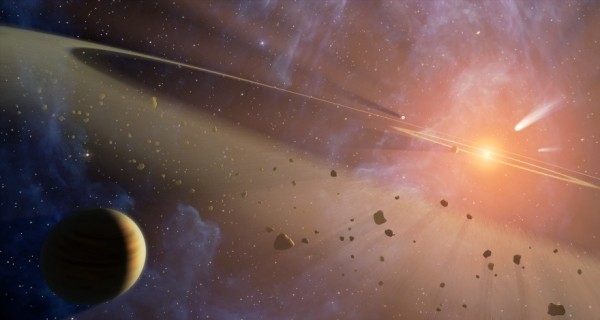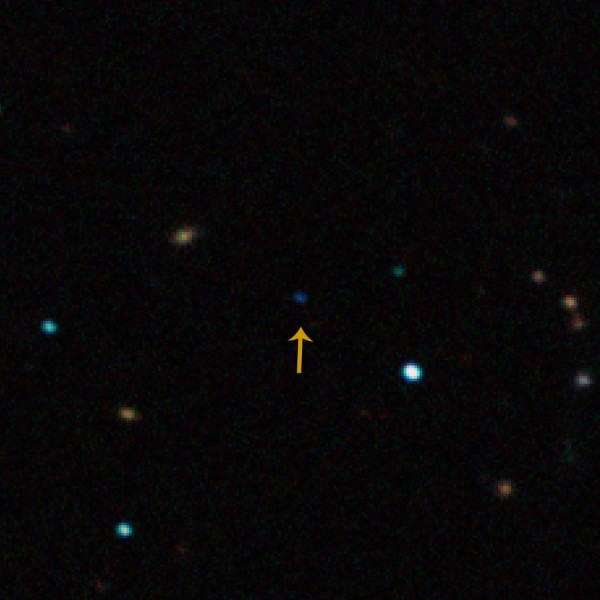“The truth is you can be orphaned again and again and again. The truth is, you will be. And the secret is, this will hurt less and less each time until you can't feel a thing. Trust me on this.” -Chuck Palahniuk
The planets we know of -- in our own Solar System and beyond -- all have something in common that we routinely take for granted: the fact that they all orbit stars. But not only isn't this necessarily true of all planets, it might not be true for most planets.
When we run simulations of planetary formation around stars, we find that a great many planets, of both the gas giant and rocky varieties, get kicked out into interstellar space. But what's even more surprising is that the process of star formation, and particularly the quenching of star formation from UV radiation, could create thousands of planets or more for every single successful star our Universe makes.



I'm a little confused. From the article:
Ethan, you made a big point about these orphans being made from the lighter gasses blown away from the stars, and them being 'almost stars' that didn't ignite. Wouldn't that mean that we expect most of them to be gas giants? It seems strange then to say that these orphans may or may not have atmospheres, given that - if I'm reading your article correctly - you really expect most of the orphans to be gas giants.
"Ethan, you made a big point about these orphans being made from the lighter gasses "
Not as far as I can tell. Just that they're small. ALL stars, indeed most planets are made from the lighter gasses. Silicate rocks are made from the lighter elements, even. We would not expect them to be gas giants because the definition of "gas giant" is not "is made mostly of lighter elements".
And the bit about the atmosphere is a sentence started with: "These are the homeless *planets*...".
There's a hint there...
Which means that the nearest exoplanets to our solar system are likely to be nomadic (AKA rogue, AKA homeless). They are out there, maybe only a light year away, we just have to find them.
@Eric and Wow
Concerning the atmosphere... I tend to agree with Eric in understanding the text. And is a bit awkward to comment on the article that I didn't read because of Forbes's crap wall... so I will ask some questions of my own.
According to classification, we have gas giants and then brown dwarfs and then stars. If a body is something that should have become a star but didn't.... then it ought to be either a gas giant or a brown dwarf. No? Is there some other type it can be? Having said that.. both gas giants (all of them) and brown dwarfs have atmospheres by default since they are mostly made of hydrogen and helium.
So my question (and Eric's as well IMO) is can you have a rocky planet that could have been a star but didn't gather enough mass? Because only rocky planets can be without atmosphere.
The definition of brown dwarf star is not just the size, for a start. A brown dwarf can be smaller than a gas giant.
I also don't visit forbes, so I have very little other than eric's quote to go on and what I know about such things.
Ethan is talking such large numbers, that their mass might easily outweigh the total mass of stars. If that were the case then dark matter might then be composed of rogue planets and brown dwarfs. Somehow I don't think Ethan would buy that, but the numbers he is throwing out would imply it.
No, if it were formed of such large macroscopic objects they would cause enough gravitational lensing (for stars or black holes) or stellar occultation (planets or planetesimals) that they would have been spotted. People have looked for that solution.
Wow @2: here's an example. There's even more text in the Forbes article that also talks about rogues being gas-giant-like:
In fairness, Ethan says that a proto-star-system may kick out 5-10 rocky worlds for every gas giant it kicks out. But he also says that the total amount of rogues contributed by such proto-systems is under 50% of the total of rogues; the rest are almost-stars as described above. So the way I read it, we should expect the >50% of rogues that arise from blown-out nebula are big balls of mostly hydrogen gas. We can also expect that of the remaining <50%, 10-20% are big balls of mostly gas too. So in terms of making a generalization, yes both numerically and by mass our models tell us to expect the majority of rogues have atmospheres.
I don't know. I don't want to quote more from Forbes because I don't want to infringe the copyright, but the way I read Ethan's article is that he thinks the breakdown is something like 50+% failed stars by mass. Of the remaining 49-% rogue planet mass, there is one kicked-out gas giant for every 5-10 kicked out rocky planets. But given the size of gas giants compared to rocky worlds in our system, that would imply that the percent mass of rogues with atmospheres is extremely high. Pretty much 100% if you rounded it to the nearest %, just because it would take hundreds of rocky kick-outs to equal a single gas giant, let alone a failed star.
It looks like the idea is that those gas giants, still vast solid bodies underneath, have most of their atmosphere, if not all, thrown off in the violence of their ejection.
This IS supposed to be blown off by ejecta, rather than orbital energy exchange, where the latter doesn't end with a huge wind moving the mass of the planet off, which finds it much easier to blow the gasses off because they're bound 100 times weaker than a solid,
Remember, the metallic core of Jupiter is much more massive than our earth. But its not an atmosphere, and IS made of hydrogen. Which is metallic. Not gaseous.
@Wow #10
concerning Jupiter and solid hydrogen core.... very good example.. I haven't given that a tougth.. true.. anything can be solid given enough pressure. But... even if you blew away the current gassious part to expose the solid core, wouldn't the top layer of solid core start evaporating due to change in pressure, and form a layer of atmosphere again?
Not entirely.
There's still a lot of mass there. The reason why gas giants get to be gas giants is they can steal all the material, whilst the smaller planets lose it because the sun blows all that mass away.
They have a larger silicon content than the solid planets. It's just dwarfed by the hydrogen.
And stars just do that too, to a bigger extent.
But like I said, I don't know what exactly was said. It's been a couple of decades since I last was in the zone in astrophysics, and it covers a lot of ground, so I'm still out on the loop on many things.
This article of ethane reminds me of my question in my comment number 144 in this site dated november2,2014
Feel free to bask in that.
It means nothing to anyone else. But we don't care.
wow @7 agreed.
At 10, my reading is it is a stellar wind from the O&B stars ,and if enough time goes by supernovas when they reach the end. This is pretty tenuous stuff, but so is the gas in the clouds that are forming the stars. The planets atmospheres are held in place by the planets gravity, and these winds are very diffuse, probably orders of magnitude lower density than the solar wind near earth, so the erosion of planetary atmospheres is likely pretty minimal.
On earth in biology we have too many in number and weight of sparrows than eagles in nature ,in universe with high probability we may have too many smaller clouds to form separate giant masses not derived from stars,s cloud witch can,t be seen by our telescopes than the stars we see specially the more persentage of smaller stars than our sun in galaxies increases the chace of this high probability.
"Not near a star" means very cold. Even a body composed mainly of hydrogen and helium may be effectively without atmosphere if it's cold enough.
I think most of these giant gases are located in unvisible parts of intergalactic void spaces.
@16,17
QUE ???
Oh, PS we get ice giants too.Water is massively common in the universe because Hydrogen is ridiculously abundant, and Oxygen, the other component, also very much present and they love to get together and get slippery when wet...
In light of this, are all the planets in our solar system 'native' or is one or more adopted. Uranus is weird. Not only on its side but also inert.
Weird and freaky if it's from another system. Perhaps that's how they - the aliens - travel interstellar. .
Where did my comments go Ethan?
Ming @21:
Whether or not other civilizations are making use of "rogue" planets, it certainly makes sense to use them as destinations for space migration.
In 1/2 billion years, the expansion of the Sun is predicted to boil the oceans and render Earth uninhabitable. That is the necessary and inevitable basis for interstellar migration. But why go to planets whose stars will also become existential threats, when you can go to planets that face no such hazard?
Each "rogue" planet's ecosystem could be powered by energy collected by orbital structures around stars that are near enough for the purpose, that energy transmitted via microwave laser to artificial satellites orbiting the planets. Thus each "rogue" planet civilization has multiple power sources (backups on top of backups), each star can power multiple "rogue" planets at a distance, and the resulting network is far more resilient than the "one or two planets orbiting each single star" model of interstellar civilization.
If it turns out that gas giant "rogue" planets are common, they could be mined for hydrogen that could be used as fusion fuel on the "rogue" planets. That type of hydrogen mining might be feasible as an interim solution while building the needed Dyson clouds around nearby stars.
Mining hydrogen from gas giants could even serve to keep a somewhat spartan interstellar civilization alive long after the last stars have become unusable as energy sources.